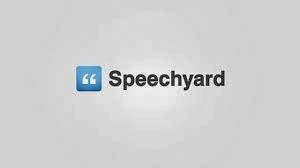Torre de Hercules became green on 17th March 2013, too.
Everything's GREEN on Saint Patrick's Day, the Patron Saint of Ireland. This year even Coruña's Hercules Tower turned green (see photos above).
St. Patrick's Day is celebrated on March 17, the saint's religious feast day and the anniversary of his death in the fifth century. The Irish have observed this day as a religious holiday for over 1,000 years.
On St. Patrick's Day, which falls during the Christian season of Lent, Irish families would traditionally attend church in the morning and celebrate in the afternoon. Lenten prohibitions against the consumption of meat were waived and people would dance, drink and feast--on the traditional meal of Irish bacon and cabbage.
St. Patrick's Day is a holiday known for parades, shamrocks and all things Irish. From leprechauns to the color green, find out how symbols we now associate with St. Patrick's Day came to be, and learn about a few that are purely American invention.
The Shamrock
The shamrock, which was also called the "seamroy" by the Celts, was a sacred plant in ancient Ireland because it symbolized the rebirth of spring. By the seventeenth century, the shamrock had become a symbol of emerging Irish nationalism. As the English began to seize Irish land and make laws against the use of the Irish language and the practice of Catholicism, many Irish began to wear the shamrock as a symbol of their pride in their heritage and their displeasure with English rule.
Irish Music
Music is often associated with St. Patrick's Day—and Irish culture in general. From ancient days of the Celts, music has always been an important part of Irish life. The Celts had an oral culture, where religion, legend and history were passed from one generation to the next by way of stories and songs. Today, traditional Irish bands like The Chieftains, the Clancy Brothers and Tommy Makem are gaining worldwide popularity. Their music is produced with instruments that have been used for centuries, including the fiddle, the uilleann pipes (a sort of elaborate bagpipe), the tin whistle (a sort of flute that is actually made of nickel-silver, brass or aluminum) and the bodhran (an ancient type of framedrum that was traditionally used in warfare rather than music).
The Leprechaun
The original Irish name for these figures of folklore is "lobaircin," meaning "small-bodied fellow."Belief in leprechauns probably stems from Celtic belief in fairies, tiny men and women who could use their magical powers to serve good or evil. In Celtic folktales, leprechauns were cranky souls, responsible for mending the shoes of the other fairies. Though only minor figures in Celtic folklore, leprechauns were known for their trickery, which they often used to protect their much-fabled treasure. Leprechauns had nothing to do with St. Patrick or the celebration of St. Patrick's Day, a Catholic holy day. In 1959, Walt Disney released a film called Darby O'Gill, the Little People, which introduced America to a very different sort of leprechaun than the cantankerous little man of Irish folklore. This cheerful, friendly leprechaun is a purely American invention, but has quickly evolved into an easily recognizable symbol of both St. Patrick's Day and Ireland in general.










No comments:
Post a Comment